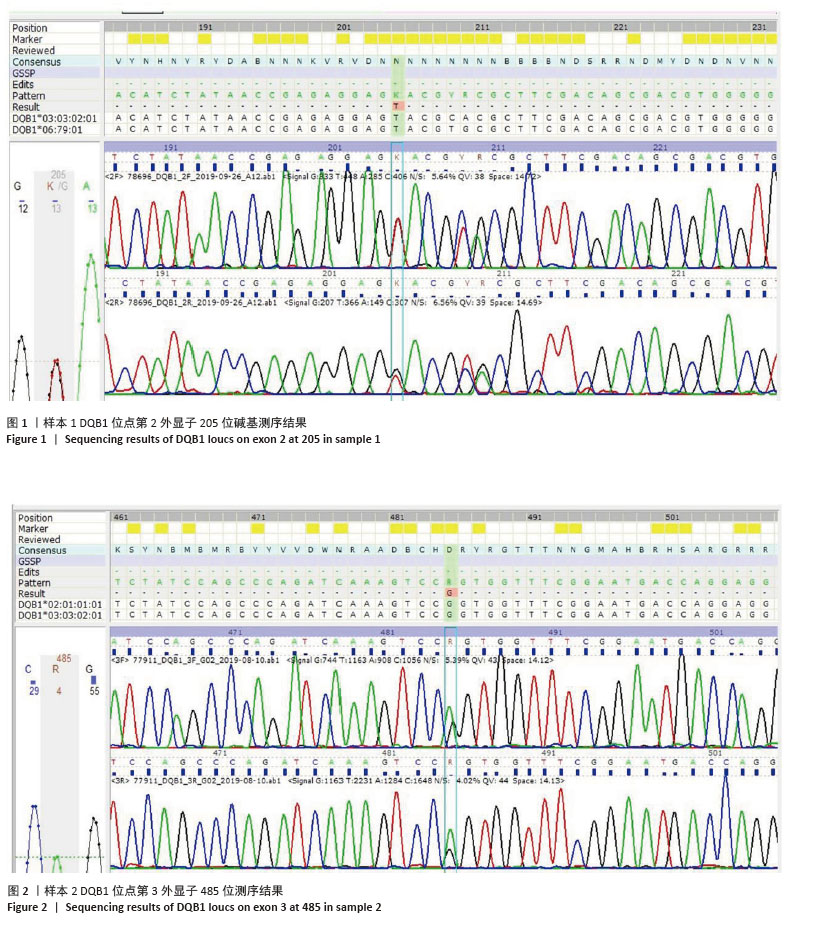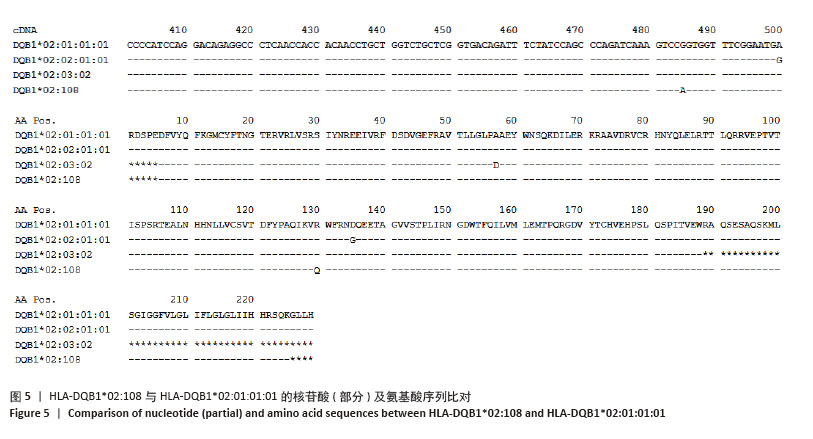[1] TIMOFEEVA OA, PHILOGENE MC, ZHANG QJ. Current donor selection strategies for allogeneic hematopoietic cell transplantation. Hum Immunol. 2022;83(10):674-686.
[2] TIERCY JM, CLAAS F. Impact of HLA diversity on donor selection in organ and stem cell transplantation. Hum Hered. 2013;76(3-4): 178-186.
[3] BLANDIN L, DOUGÉ A, FAYARD A, et al. Platelet transfusion refractoriness and anti-HLA immunization. Transfusion. 2021;61(6): 1700-1704.
[4] HAUFROID V, PICARD N. Pharmacogenetics Biomarkers Predictive of Drug Pharmacodynamics as an Additional Tool to Therapeutic Drug Monitoring. Ther Drug Monit. 2019;41(2):121-130.
[5] HORN PA, ELSNER HA, BLASCZYK R. Tissue typing for hematopoietic cell transplantation: HLA-DQB1 typing should be included. Pediatr Transplant. 2006;10(6):753-754.
[6] 朱发明,毛伟,张志欣.人类白细胞抗原系统分型技术及其应用的现状分析和展望[J].中国输血杂志,2019,32(8):736-740.
[7] GEO JA, AMEEN R, AL SHEMMARI S, et al. Advancements in HLA Typing Techniques and Their Impact on Transplantation Medicine. Med Princ Pract. 2024;33(3):215-231.
[8] DUNN PP. Human leucocyte antigen typing: techniques and technology, a critical appraisal. Int J Immunogenet. 2011;38(6): 463-473.
[9] YOHE S, THYAGARAJAN B. Review of Clinical Next-Generation Sequencing. Arch Pathol Lab Med. 2017;141(11):1544-1557.
[10] 董丽娜,陈男英,王炜,等.AllType NGS11位点测序试剂在HLA-DPB1基因分型中的模棱两可结果分析[J].中国输血杂志,2023, 36(1):1-7.
[11] 武君华,王满妮,王天菊,等.下一代测序鉴定新等位基因HLA-DQB1*04:74和HLA-DRB1*07:01:23序列及家系调查[J].中国实验诊断学,2021,25(10):1489-1494.
[12] 钟艳平,陈浩,周丹,等.应用二代测序技术排除PCR-SBT零错配的HLA-C基因型[J].中国实验血液学杂志,2022,30(4):1213-1218.
[13] FERNANDES TA, FUKAI R, SOUZA CA, et al. Molecular identification of the HLA-DRB1-DQB1 for diagnosis and follow-up of acute leukemias. Blood Cells Mol Dis. 2010;44(2):69-73.
[14] 齐珺,王天菊,陈乐,等.HLA-DRB1,-DQB1,-DPB1等位基因及单体型多态性与北方汉族急性髓系白血病(非M3型)的关联性研究[J].中国输血杂志,2021,34(2):101-106.
[15] KUTSZEGI N, YANG X, GÉZSI A, et al. HLA-DRB1*07:01-HLA-DQA1*02:01-HLA-DQB1*02:02 haplotype is associated with a high risk of asparaginase hypersensitivity in acute lymphoblastic leukemia. Haematologica. 2017;102(9):1578-1586.
[16] GAGNÉ V, ST-ONGE P, BEAULIEU P, et al. HLA alleles associated with asparaginase hypersensitivity in childhood ALL: a report from the DFCI Consortium. Pharmacogenomics. 2020;21(8):541-547.
[17] QI J, WANG TJ, LI HX, et al. Association of HLA class II (-DRB1,-DQB1,-DPB1) alleles and haplotypes on susceptibility to aplastic anemia in northern Chinese Han. Hum Immunol. 2020;81(12):685-691.
[18] 黄雅琴,徐琳,艾竹,等.发作性睡病1型患者神经心理学、睡眠结构及HLA-DQB1基因型分布特征[J].中国现代神经疾病杂志, 2023,23(8):730-737.
[19] 王亮,费丽萍,杨凯,等.HLA-DQB1基因多态性与结核病易感性关系的Meta分析[J].实用预防医学,2020,27(26):641-645.
[20] 杨志明.丙型肝炎病毒感染和HLA-DQB1基因多态性的相关性研究[J].中国卫生检验杂志,2018,28(9):1057-1059.
[21] WANG T, SHEN C, QI J, et al. Haplotype-dependent HLA-DRB1-DQB1 susceptibility to occult HBV infection in Xi’an Han population. Mol Genet Genomic Med. 2023;11(4):e2102.
[22] RAMANATHAN AS, SENGUTTUVAN P, CHINNIAH R, et al. Association of HLA-DR/DQ alleles and haplotypes with nephrotic syndrome. Nephrology (Carlton). 2016;21(9):745-752.
[23] PODDIGHE D, CAPITTINI C, GAVIGLIO I, et al. HLA-DQB1*02 allele in children with celiac disease: Potential usefulness for screening strategies. Int J Immunogenet. 2019;46(5):342-345.
[24] ZOU J, KONGTIM P, ORAN B, et al. Refined HLA-DPB1 mismatch with molecular algorithms predicts outcomes in hematopoietic stem cell transplantation. Haematologica. 2022;107(4):844-856.
[25] MALKI MMA, GENDZEKHADZE K, STILLER T, et al. Protective effect of HLA-DPB1 mismatch remains valid in reduced-intensity conditioning unrelated donor hematopoietic cell transplantation. Bone Marrow Transplant. 2020;55(2):409-418.
[26] PETERSDORF EW, BENGTSSON M, DE SANTIS D, et al. Role of HLA-DP Expression in Graft-Versus-Host Disease After Unrelated Donor Transplantation. J Clin Oncol. 2020;38(24):2712-2718.
[27] FLEISCHHAUER K, SHAW BE. HLA-DP in unrelated hematopoietic cell transplantation revisited: challenges and opportunities. Blood. 2017;130(9):1089-1096.
[28] DEHN J, SPELLMAN S, HURLEY CK, et al. Selection of unrelated donors and cord blood units for hematopoietic cell transplantation: guidelines from the NMDP/CIBMTR. Blood. 2019;134(12):924-934.
[29] MANGUM DS, CAYWOOD E. A clinician’s guide to HLA matching in allogeneic hematopoietic stem cell transplant. Hum Immunol. 2022;83(10):687-694.
[30] FUCHS EJ, MCCURDY SR, SOLOMON SR, et al. HLA informs risk predictions after haploidentical stem cell transplantation with posttransplantation cyclophosphamide. Blood. 2022;139(10): 1452-1468.
[31] PETERSDORF EW, ANASETTI C, MARTIN PJ, et al. Limits of HLA mismatching in unrelated hematopoietic cell transplantation. Blood. 2004;104(9):2976-2980.
[32] PETERSDORF EW. Mismatched unrelated donor transplantation. Semin Hematol. 2016;53(4):230-236.
[33] LOISEAU P, BUSSON M, BALERE ML, et al. HLA Association with hematopoietic stem cell transplantation outcome: the number of mismatches at HLA-A, -B, -C, -DRB1, or -DQB1 is strongly associated with overall survival. Biol Blood Marrow Transplant. 2007;13(8):965-974.
[34] MORISHIMA Y, KASHIWASE K, MATSUO K, et al. Biological significance of HLA locus matching in unrelated donor bone marrow transplantation. Blood. 2015;125(7):1189-1197.
[35] FÜRST D, NEUCHEL C, TSAMADOU C, et al. HLA Matching in Unrelated Stem Cell Transplantation up to Date. Transfus Med Hemother. 2019; 46(5):326-336.
[36] PETERSDORF EW, STEVENSON P, BENGTSSON M, et al. HLA-B leader and survivorship after HLA-mismatched unrelated donor transplantation. Blood. 2020;136(3):362-369.
[37] AYUK F, BEELEN DW, BORNHÄUSER M, et al. Relative Impact of HLA Matching and Non-HLA Donor Characteristics on Outcomes of Allogeneic Stem Cell Transplantation for Acute Myeloid Leukemia and Myelodysplastic Syndrome. Biol Blood Marrow Transplant. 2018; 24(12):2558-2567.
[38] FLEISCHHAUER K, TRAN TH, MEISEL R, et al. Donor Selection for Allogeneic Hematopoietic Cell Transplantation. Dtsch Arztebl Int. 2023;120(15):261-268. |



